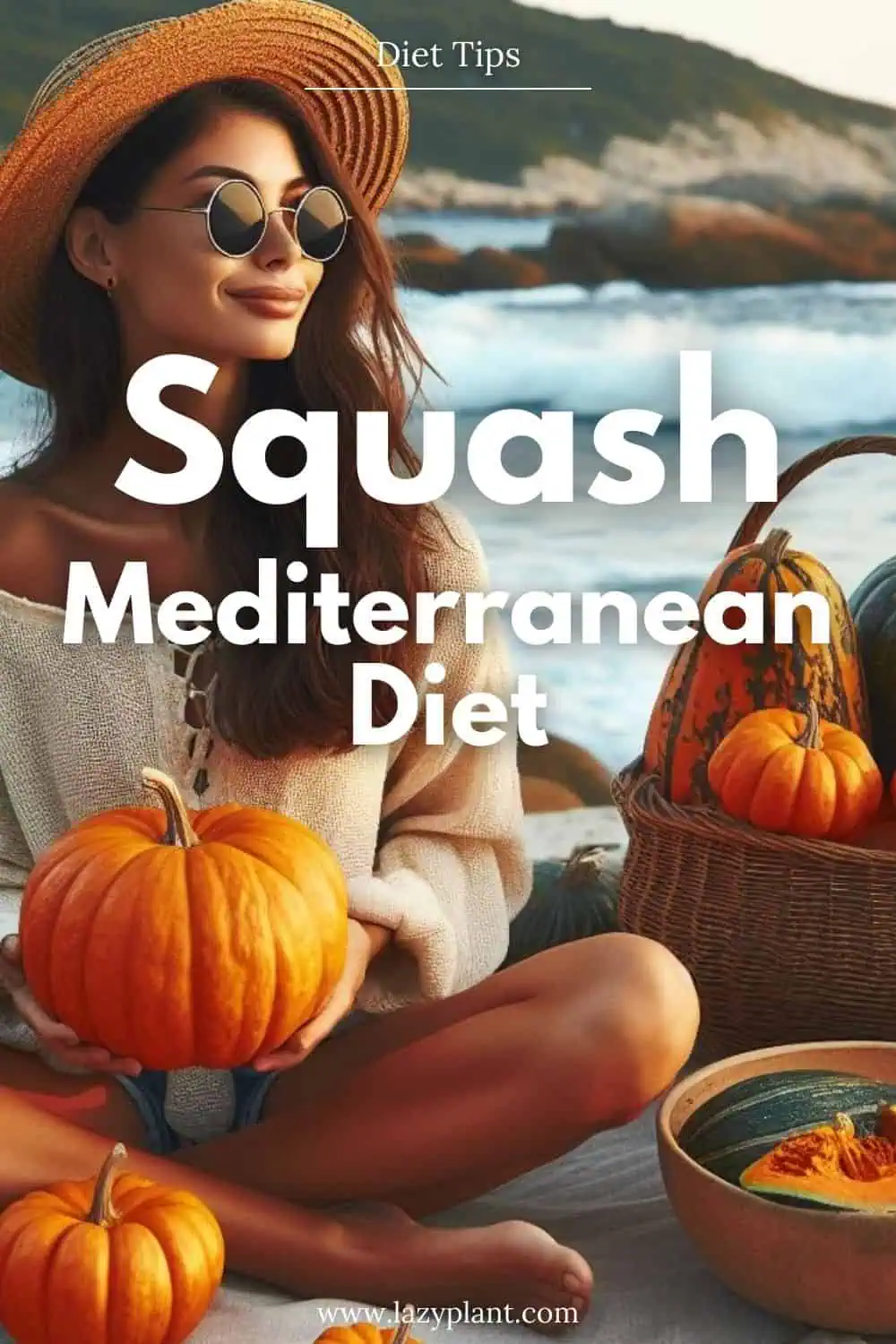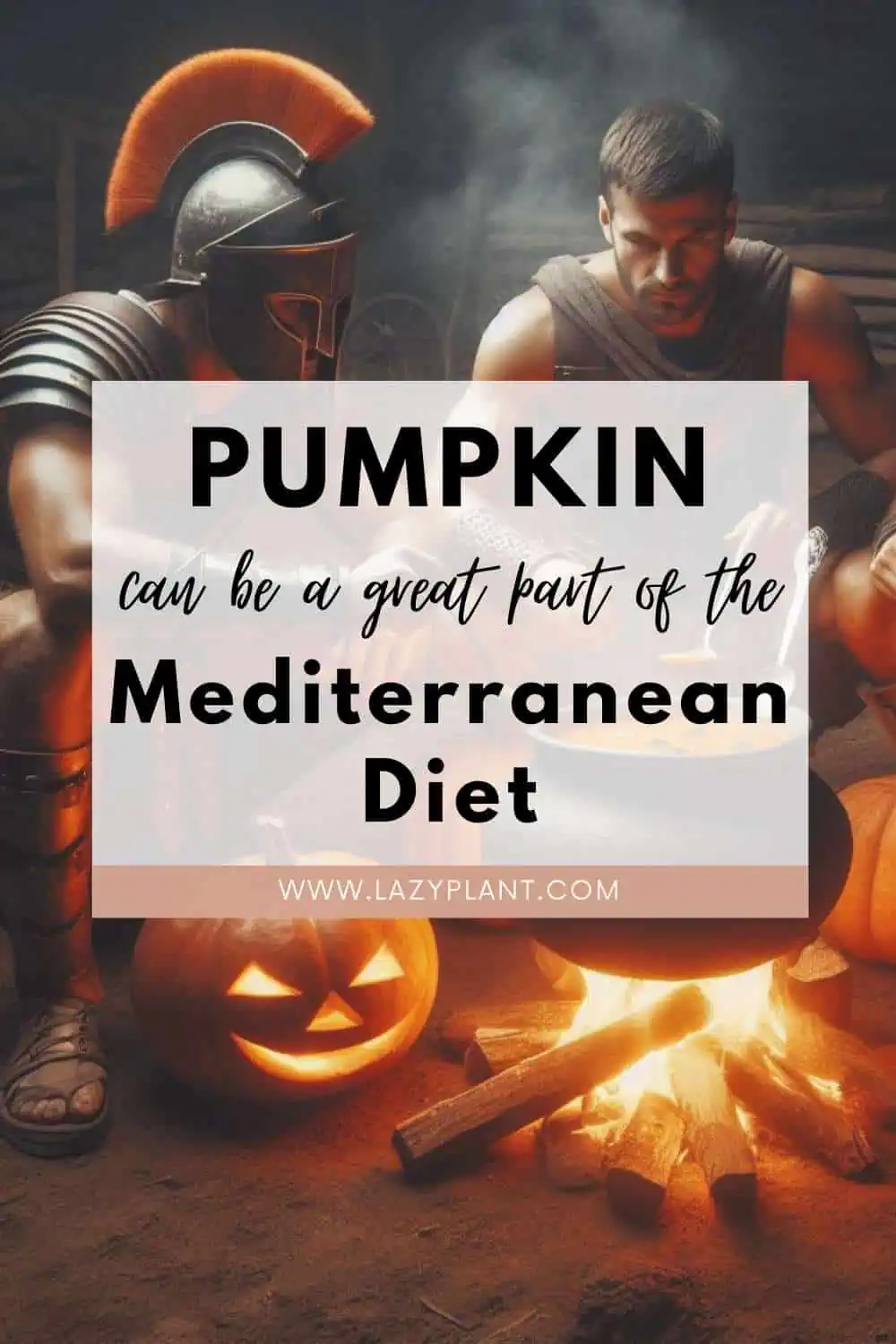Although squash wasn’t a traditional food of ancient civilizations around the Mediterranean Sea, it fits perfectly into this diet plan, as it’s packed with fiber, vitamins, and antioxidants while pumpkin seeds are among the few plant-based foods with complete protein and provide shocking amounts of minerals per serving.
Since, their introduction to Europe in the 16th century, squash and pumpkin seeds have gained popularity in many European cousins.
Benefits of the Mediterranean Diet
Studies have shown that the Mediterranean diet can help lower the risk of developing chronic diseases like heart disease, stroke, type 2 diabetes, and even certain cancers. This diet emphasizes healthy fats like olive oil, which can improve cholesterol levels and blood pressure, reducing the risk of heart disease. Especially if used instead of foods high in saturated fat like butter.
Moreover, the Mediterranean diet may promote cognitive function and potentially reduce the risk of dementia and Alzheimer’s disease.

The focus on fruits, vegetables, and whole grains provides antioxidants and anti-inflammatory compounds, contributing to overall health, while fiber from fruits, vegetables, beans, and whole grains supports a healthy gut microbiome, essential for digestion and overall well-being.
The Mediterranean diet is not a fad diet, but rather a sustainable lifestyle change that promotes healthy eating habits. This can lead to gradual and sustainable weight loss. The emphasis on fiber-rich foods keeps you feeling fuller for longer, reducing cravings and overeating. It encourages mindful eating.
By promoting a healthy lifestyle change rather than restrictive eating, the Mediterranean diet can help individuals avoid the yo-yo effect of weight loss and regain.
Can Squash be a part of the Mediterranean Diet?
Yes, squash absolutely can be a part of the Mediterranean diet! In fact, it’s a well-suited food choice for this dietary pattern, as it emphasizes plant-based foods like vegetables, fruits, whole grains, and legumes. Squash fits perfectly into this category, offering a delicious and versatile vegetable option.
Additionally, the Mediterranean diet encourages consuming seasonal produce. Many squash varieties are in season during fall and winter, making them a great choice to incorporate during these months. A variety of squash cultivars grow around the Mediterranean Sea.
Even pumpkin seeds can be a part of the Mediterranean diet, as it’s a plant-based food, packed with healthy fats, and a variety of nutrient-rich ingredients.
Pumpkin seeds boast good fats, particularly monounsaturated fats, which are the same type of healthy fats found in olive oil, a cornerstone of the Mediterranean diet. They’re also particularly rich in essential vitamins and minerals like magnesium, zinc, and iron, as well as phenolic compounds, all contributing to overall well-being.
Due to their exceptional nutritional value and their low calorie content, squash and pumpkin seeds play a beneficial role in weight loss.
Did people around the Mediterranean Sea eat Squash?
Pumpkin and other squash cultivars have been traditionally consumed around the world for centuries. They’re considered a medical plant that might cure many chronic diseases.[1]
These vegetables have a rich history, dating back to around 8,000 B.C. in present-day Mexico and Guatemala, making them some of the earliest domesticated plants. They were cultivated long before corn and beans, with a history spanning over 4,000 years.[2]
Introduced to Europe in the 16th century, they quickly gained popularity and became widely distributed across the globe. The presence of images depicting squash and pumpkin in Renaissance artwork, such as the frescoes by Raphael Sanzio, indicates their familiarity and likely consumption in Europe during the medieval era.[3]
However, the cultivation and consumption of squash and pumpkin in Europe doesn’t date back to ancient times. It is universally accepted that squash (genus Cucurbita) was unknown to the ancient Greeks, Romans, or Egyptians.[4,5]
Pumpkin and squash are common dish ingredients in Western Europe. However, in the central and eastern European countries, they became partly forgotten and mainly associated with purée juice and soup for the youngest children.
Local Cultivars
Some local squash cultivars grown in the Mediterranean area are:
Zucchini: This variety of summer squash is widely cultivated throughout the Mediterranean region. It is known for its tender texture and mild flavor, making it a versatile ingredient in various Mediterranean dishes.
Delica Squash: This cultivar is popular in Southern Europe, particularly in Italy and Greece. Delica squash is prized for its sweet flavor and creamy texture, making it a favorite in Mediterranean cuisine.
Butternut Squash (Cucurbita moschata): Although originally native to the Americas, butternut squash has become a common cultivar in Mediterranean countries. It is valued for its nutty flavor and smooth texture, often used in soups, stews, and roasted vegetable dishes.
Cocozelle Squash: Cocozelle squash is a traditional Italian variety characterized by its long, slender shape and dark green stripes. It has a delicate flavor and is commonly used in Mediterranean recipes, such as ratatouille and pasta dishes.

Cavili Squash: This cultivar is popular in Spain and other Mediterranean countries. It has a cylindrical shape and vibrant green color, with a tender texture and mild flavor. Cavili squash is often grilled or sautéed and served as a side dish or incorporated into salads.
Tondo di Piacenza Squash: Originating from Italy, Tondo di Piacenza squash is a round, flattened variety with a pale green skin. It has a sweet, nutty flavor and firm texture, making it suitable for roasting, grilling, or stuffing.
Tromboncino Squash: Also known as zucchetta, tromboncino squash is a traditional cultivar in Italy. It has a unique shape resembling a trombone, with a curved neck and bulbous end. Tromboncino squash has a delicate flavor and is often used in Mediterranean dishes like risotto and frittata.
Costata Romanesca Squash: This Italian heirloom variety is known for its ribbed, scalloped shape and vibrant green color. Costata Romanesca squash has a rich, nutty flavor and firm texture, making it ideal for grilling, sautéing, or roasting.
Greek Sweet Red Squash: As the name suggests, this Greek cultivar is prized for its sweet flavor and vibrant red-orange flesh. It is commonly used in traditional Greek dishes like moussaka and briam, adding flavor and color to the recipes.
Rond de Nice Squash: Hailing from France, Rond de Nice squash is a round, flattened variety with light green skin. It has a tender texture and mild flavor, making it suitable for stuffing, baking, or sautéing.
All squash cultivars are super easy to grow, even for new gardeners. In fact, it’s one of the best food to add to a survival garden!
Traditional Recipe Ideas
Squash Dishes
Squash can be incorporated into various Mediterranean dishes. You can roast, steam, purée, or even stuff squash for a satisfying and flavorful meal. Here are some recipe ideas:
Roasted Pumpkin Hummus: Blend roasted pumpkin with chickpeas, tahini, garlic, lemon juice, and olive oil for a creamy and flavorful hummus. Serve with pita bread or fresh vegetables.
Pumpkin Risotto: Cook Arborio rice with sautéed onions, garlic, and diced pumpkin until creamy and tender. Finish with Parmesan cheese and fresh herbs for a comforting and flavorful dish.
Greek Pumpkin Pie (Kolokithopita): Layer phyllo pastry with a mixture of roasted pumpkin, feta cheese, onions, and herbs. Bake until golden and crispy for a savory and delicious pie.
Moroccan Pumpkin Soup: Simmer pumpkin cubes with onions, garlic, ginger, and Moroccan spices like cumin, coriander, and cinnamon until tender. Blend until smooth and finish with a swirl of yogurt and fresh cilantro.
Italian Pumpkin Risotto: Similar to regular risotto but with the addition of pumpkin purée for extra creaminess and flavor. Finish with a drizzle of balsamic glaze and toasted pine nuts for a touch of sweetness and crunch.
Spanish Pumpkin and Chickpea Stew: Combine diced pumpkin, cooked chickpeas, onions, tomatoes, and Spanish chorizo in a flavorful broth seasoned with paprika, cumin, and saffron. Simmer until all the flavors meld together.
Lebanese Pumpkin Kibbeh: Mix roasted pumpkin with bulgur wheat, onions, and Middle Eastern spices like allspice and cinnamon. Form into patties and fry until golden and crispy.
Moroccan Pumpkin Tagine: Cook pumpkin chunks with onions, preserved lemon, olives, and Moroccan spices in a traditional tagine pot until tender and fragrant. Serve with couscous or crusty bread.
Pumpkin Seeds
Pumpkin seeds can also be incorporated into various Mediterranean dishes in delicious ways:
Greek Salad with Pumpkin Seed Topping: A classic Greek salad featuring fresh cucumbers, tomatoes, red onions, olives, and feta cheese, topped with a sprinkle of toasted pumpkin seeds for added crunch and nuttiness.
Roasted Butternut Squash Soup with Pumpkin Seed Pesto: Creamy roasted butternut squash soup garnished with a dollop of homemade pumpkin seed pesto, made with toasted pumpkin seeds, fresh basil, garlic, olive oil, and Parmesan cheese.
Mediterranean Quinoa Salad with Pumpkin Seeds: A vibrant quinoa salad loaded with Mediterranean-inspired ingredients like chopped tomatoes, cucumbers, Kalamata olives, feta cheese, and fresh herbs, finished with a generous sprinkling of toasted pumpkin seeds.
Pumpkin Seed Hummus: A twist on traditional hummus, this recipe incorporates toasted pumpkin seeds for added flavor and texture. Serve with warm pita bread or fresh-cut vegetables for dipping.
Italian Pumpkin Seed Pesto Pasta: Toss cooked pasta with homemade pumpkin seed pesto, cherry tomatoes, fresh spinach, and grated Parmesan cheese for a simple yet satisfying Italian-inspired meal.

Spanish Pumpkin Seed Tapenade: A savory tapenade made with toasted pumpkin seeds, roasted red peppers, garlic, olive oil, and smoked paprika. Spread on crusty bread or use as a dip for vegetable sticks.
Moroccan Pumpkin Seed Couscous: Fluffy couscous mixed with roasted vegetables, chickpeas, dried fruits, and a sprinkle of toasted pumpkin seeds, seasoned with Moroccan spices like cumin, coriander, and cinnamon.
Israeli Pumpkin Seed Energy Bites: Wholesome energy bites made with rolled oats, dried fruits, almond butter, honey, and toasted pumpkin seeds, rolled into bite-sized balls and perfect for on-the-go snacking.
Tunisian Pumpkin Seed Sweets: Traditional Tunisian sweets made with a blend of ground almonds, orange blossom water, and honey, rolled into balls and coated with toasted pumpkin seeds for a crunchy exterior.